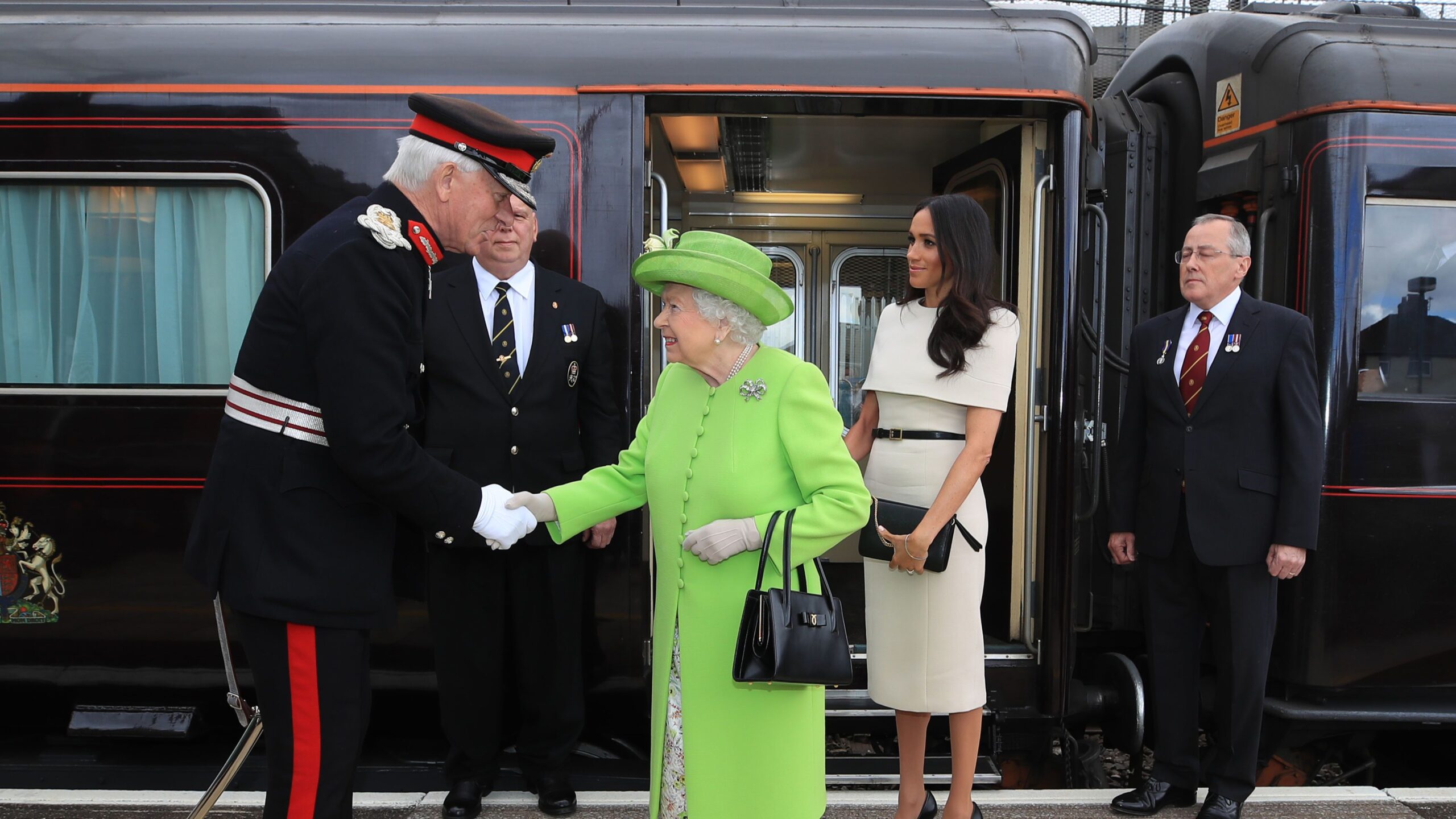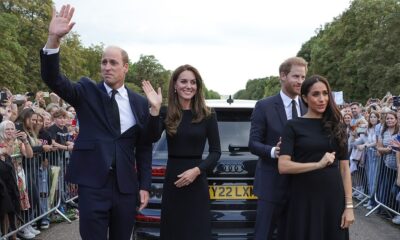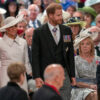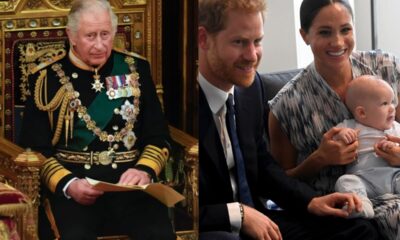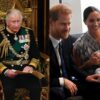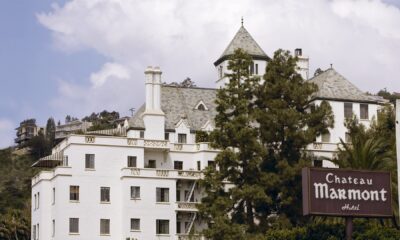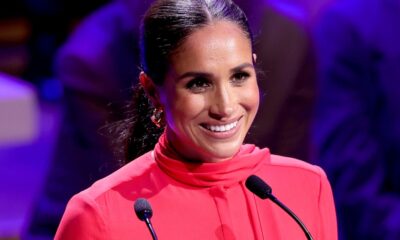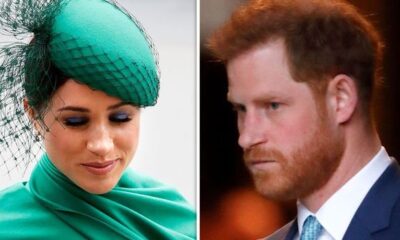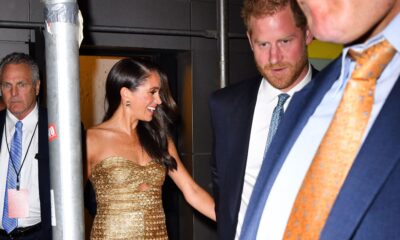Royal Family News
Inside the Royal Train: A Peek into the Queen’s Favourite Way to Travel
The Royal Train, a miniature Buckingham Palace on wheels, is the Queen's preferred mode of transportation.
This centuries-old institution has been shuttling senior members of the royal family around for years.
Although Queen Victoria was the first monarch to use it, the train has undergone several changes, and today, it boasts a more functional and contemporary design with some romantically retro touches.
The Royal Train comprises an engine and a set of nine separate carriages or saloons that can be used in various configurations.
The engine is not solely for royal use and is part of other private charters when not utilized by the Queen and her family.
However, the saloons are exclusively reserved for the Royal Family.
Trending:
The Queen, Prince Philip, Prince Charles, and Camilla, Duchess of Cornwall, each have a saloon, and the other saloons are made up of a kitchen, a dining room, and staff quarters.
All the saloons and engines are painted in claret, and around 150 of the most experienced and skilled drivers in the country can take the controls.
The Royal Train runs on biofuel and is stored in a Victorian railway depot in Buckinghamshire when not in use.
The Queen's Saloon, created in 1977, was designed to transport her and her husband during her Silver Jubilee tour, where she travelled the length and breadth of the country.
It is 75 feet long and upholstered with thick carpets, hung with Scottish landscapes by the artist Roy Penny.
Her Majesty's bedroom has a three feet wide bed with tartan trim coverlet, a bedside cabinet, a wooden chair with a tartan seat cover, tartan drapes, and a Roberts Radio set to Radio 4.
There is an adjoining bathroom and a sitting room where she works and where she and Prince Philip have breakfast.
Prince Philip's Saloon, on the other hand, contains his own separate bedroom with a three feet wide bed and an ensuite bathroom.
Although he has a shower rather than a bath in his, the sitting room is filled with chairs and a table where he can hold meetings, as well as a desk.
His saloon also contains an electric kitchen, as he likes to travel as simply as possible.
The Royal Train's standard of food is the same as that in any of the Royal Palaces and is taken care of by the Real Gourmet Company.
For evening departures, the Queen is served smoked salmon, warm sausage rolls, and chicken or egg sandwiches with the crusts removed.
In the morning, she is served Earl Grey tea, while Prince Philip favours coffee.
Since the Royal Train is only used when there are a number of stops and a full set of engagements spread over several days, the dining room is used for entertaining on board.
The table sits 12, and the place settings are laid out with the precision and attention to detail of a state banquet.
Guests are welcomed on board with flutes of champagne, box fizz, and chilled fruit juice.
Prince Charles's saloon has a painting of the Royal Yacht Britannia over the bed, and his ensuite bathroom is painted blue.
There is also an adjacent brushing room, or dressing room, where his valet prepares the Prince's clothes for the next day's engagements.
Camilla's saloon is pink, with bird's eye maplewood panelling to match that in her husband's saloon.
There are blackout blinds and an adjacent dressing room.
Staff quarters are light, airy, and functional, with strip lighting and prints on the walls.
Before the current Queen's saloons were created in 1977, her mother and father had their own set of carriages.
King George VI's saloon was stylish, simple, and in a palette of neutral shades.
During the war, the royal couple toured the country in order to keep morale high.
The saloons were armour plated, and the train parked up in tunnels overnight for extra protection.
The Queen Mother's saloon had a similar understated feel to her husband's, but in her signature favourite shade of duck egg blue, she too had a desk, and fresh flowers were often laid out.
George V and wife Queen Mary inherited their saloons from his father, Edward VII, and the redecoration was overseen by Queen Mary.
George V's saloon was the first to feature a bath on a train anywhere in the world.
Edward VII commissioned an entirely new set of saloons when he became king, with electric fans, radiators, cookers, and an electric cigar lighter.
His favourite room was the smoking room, which was manned by two footmen, one to light his cigars and the other to adjust the curtains and let in fresh air when required.
Queen Victoria was the first British monarch to have a royal train.
Her saloons were things of luxury and extravagance with quilted ceilings, richly carpeted floors, and lavishly upholstered furniture in cobalt blue.
George VI's and his wife's saloons are now exhibited in assorted railway museums around Britain.
In conclusion, the Royal Train is a sleek and streamlined royal residence of the railways, and the Queen's favourite way to travel.
It has undergone several changes, but still maintains its centuries-old institution.
The train runs on biofuel and is stored in a Victorian railway depot in Buckinghamshire when not in use.
The Royal Family's saloons are exclusively reserved for them, and the standard of food is the same as that in any of the Royal Palaces.
With its rich history and luxurious features, the Royal Train is truly a unique and fascinating mode of transportation.
Top stories:

